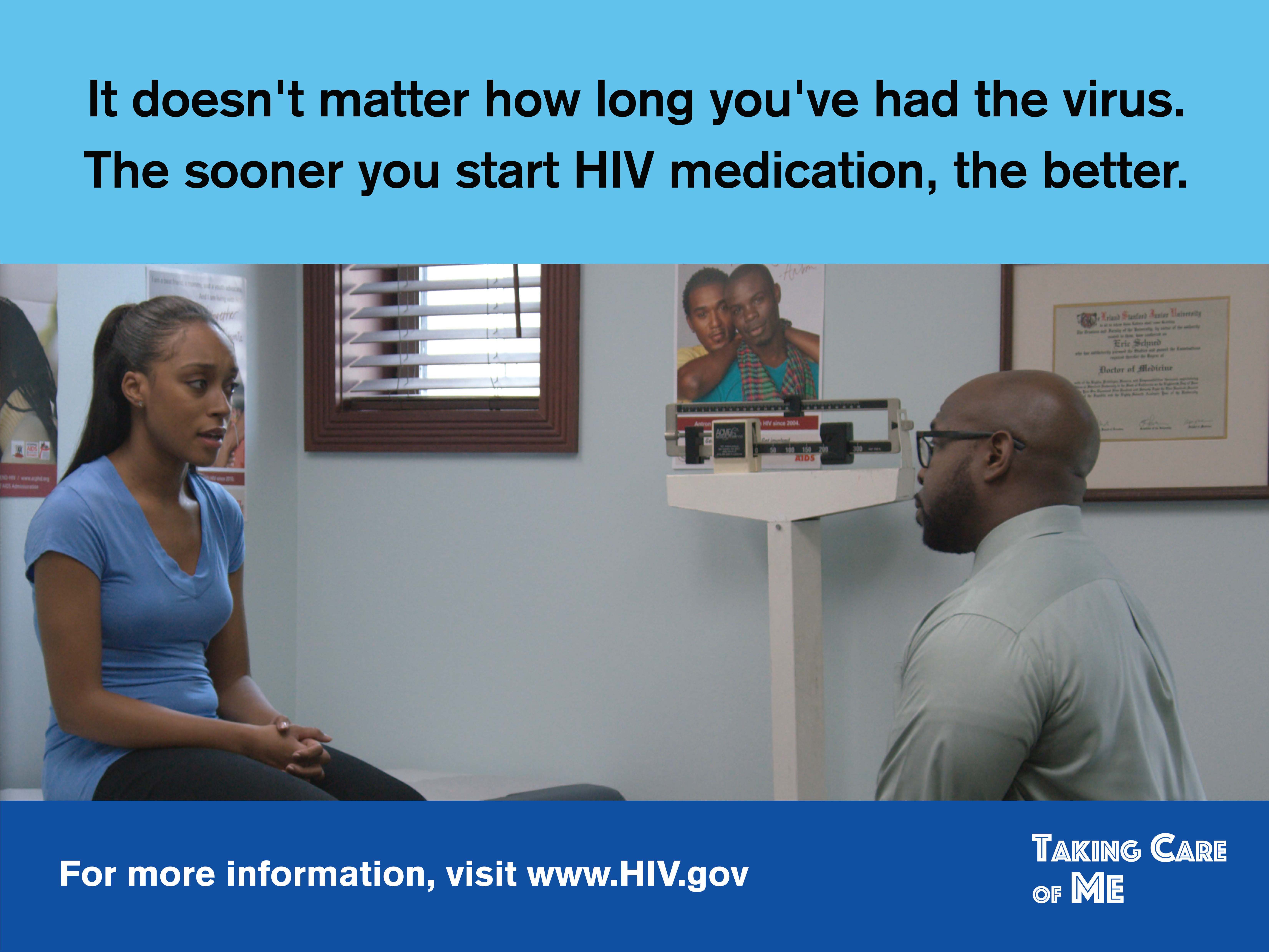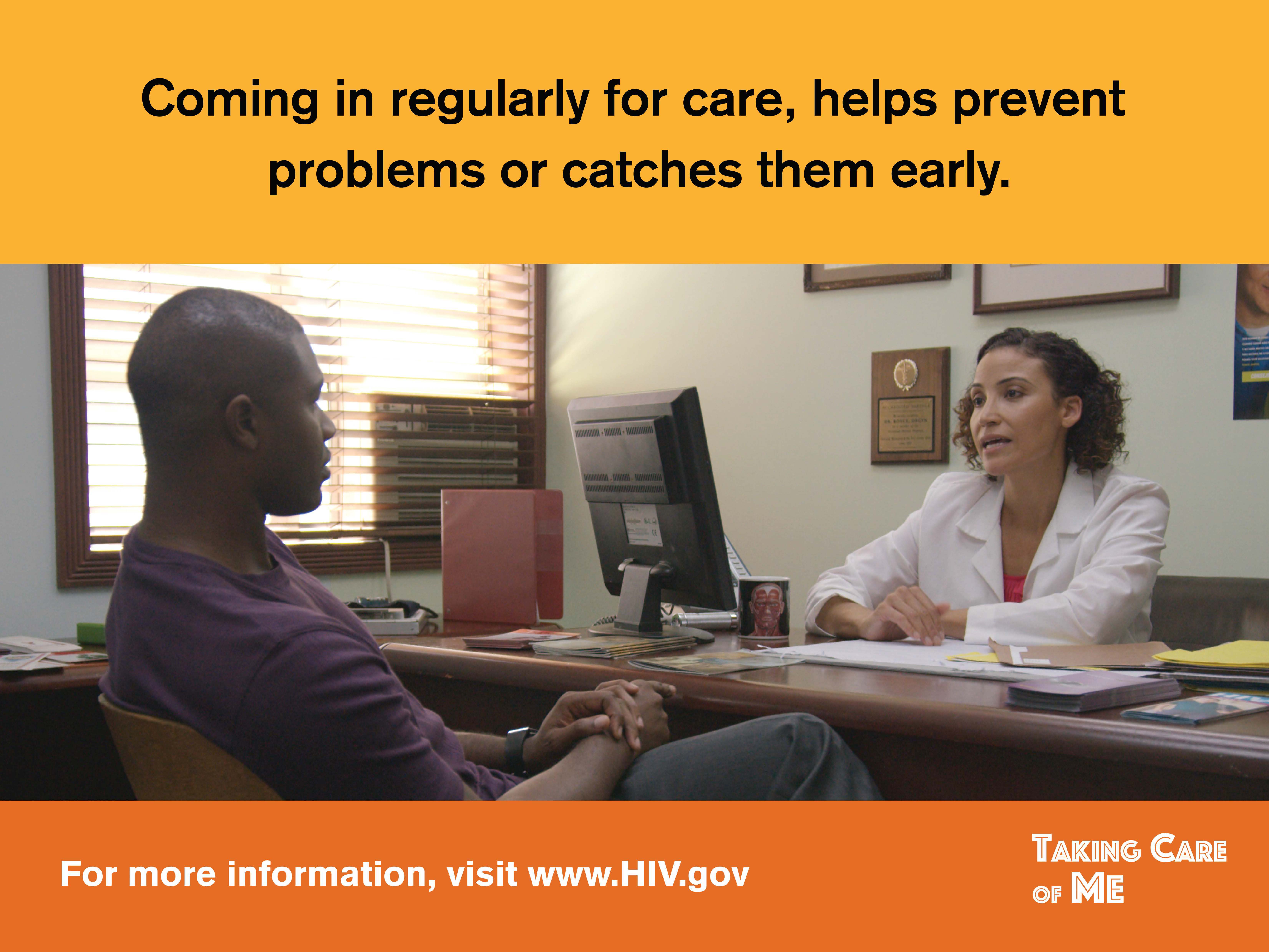Taking Care of Me is a video- and poster-based intervention to promote prompt antiretroviral therapy (ART) initiation and medication adherence for people with HIV. The video and posters are designed for use in HIV clinics, drawing on the example of similar initiatives launched in public health clinic waiting rooms that aim to reduce incidence of sexually transmitted infections. The Taking Care of Me video incorporates principles and theories of behavior change as well as appealing animation and client vignettes. The posters are intended to reinforce the video messaging. A trial testing the efficacy of Taking Care of Me found that clients exposed to the video were more likely to be prescribed ART and reach viral suppression.
Huntsville, AL
Atlanta, GA
Taking Care of Me seeks to support people with HIV in initiating regular care, acknowledging that a substantial portion of people with HIV are not engaged in care and have not reached viral suppression.1 The intervention design draws on two effective, inexpensive, video-based approaches, VOICES/VOCES and Safe in the City, that were tested in public health clinic settings. The videos used in these two approaches were approximately 25 minutes long, available in English with Spanish captioning, and suitable for use in clinic waiting rooms or small group sessions.1 Taking Care of Me adapted this model and developed an HIV care video and posters for use in clinic waiting rooms in the hope of establishing a cost-effective, feasible initiative for future replication.
Like the previously mentioned video-based interventions, Taking Care of Me used “soap-opera style” content and storylines involving diverse characters to engage viewers in clinic waiting rooms. The 29-minute video contained three vignettes and animations involving three Black or Hispanic/Latino characters in their 20s and 30s, two of whom were gay men. All three overcame challenges in accessing HIV care, a message that was reinforced in the accompanying posters. The video was available in English with Spanish captions and was designed to play on a continuous loop in HIV clinic waiting rooms where clients could see all or most of the video during a typical wait time.
Taking Care of Me drew on several conceptual frameworks to develop the video scripts and HIV care messaging. These included Social Cognitive Theory, Information-Motivation-Behavioral Skills Model, and Social Action Theory. The content of the video and posters sought to address cognitive and behavioral factors that may affect ART initiation and adherence, and incorporate positive messaging into both the video and posters.
Posters in clinic waiting rooms drew clients’ attention to the video. Available in English and Spanish, the posters also contained messages that reinforced video content.


Taking Care of Me was evaluated using a non-randomized, quasi-experimental trial with data from clinics in Atlanta and Huntsville, which together served more than 2,000 clients (n=2,023) during the study period from June 2016 to March 2017. These data were then compared to data from clients (n=1,979) visiting the same two clinics in the 10 months prior to the study period. The study results showed statistically significant increases in clients being prescribed ART and reaching viral suppression, but no significant changes in retention in care.
| Category | Information |
|---|---|
| Evaluation data | Demographic and HIV clinical data were extracted from the Electronic Health Record systems of the Huntsville and Atlanta clinics. |
| Measures |
|
| Results |
Note: The increases in viral suppression were driven by the Atlanta site (an increase of 17.5 percentage points); viral suppression decreased at the Huntsville site by 8.6 percentage points. The reasons for this decline were unclear. *statistically significant |
Source: Neumann MS, Plant A, Margolis AD, et al. Effects of a brief video intervention on treatment initiation and adherence among clients attending human immunodeficiency virus treatment clinics. Lama JR, ed. PLoS ONE. 2018;13(10):e0204599.
Simple design. Taking Care of Me used a simple design consisting of a low-cost video that can be replayed continuously and accompanying posters that can be displayed in any waiting room. This model does not require extensive staff training or time investment for replication in new settings.
Short duration of video. The Taking Care of Me video was relatively short (29 minutes), ensuring that clients could view most or all of the video during typical wait times for appointments. Clients who did not view the complete video could still benefit from seeing the intervention posters.
Modeled after previously successful videos. Taking Care of Me drew on positive findings from two successful video interventions, VOICES/VOCES and Safe in the City. These models showed that short, “soap-opera-style” vignettes could successfully engage clients at low cost to clinics, and without disruption to clients or staff schedules.
The intervention is low-cost by design, improving the chances of long-term sustainability in other settings. The video and promotional posters are freely available on the CDC Effective Interventions website. These resources are evidence-informed and designed for cost-effective, scalable implementation.
- While viral suppression was greater for intervention participants receiving care at clinics in Atlanta (58.7% versus 41.1%), the Huntsville clinic locations showed negative results for viral suppression for the intervention group.1 It was unclear why this trend occurred, but the study authors hypothesized that one possible contributor could have been the large increase (23.5%) in new clients at the Huntsville clinics during the study period, which could have slanted the sample towards a population that did not have sufficient time to reach viral suppression during the study period.
- Taking Care of Me did not require special staff training, disruptions to regular clinic workflow, or significant investments in staff time. In addition, physical components were inexpensive and had minimal equipment and space requirements (a TV and an area to display posters). This style of video intervention may represent an effective, feasible alternative to other interventions that require much more effort to implement.
“Due to its ease of delivery in a waiting room setting and low cost to sustain, it is important for HIV clinics and other healthcare settings serving [people with HIV] to consider integrating the [Taking Care of Me] video into standard clinical practice.”
The freely available video and posters listed below support the implementation and/or marketing of Taking Care of Me by health departments, community-based organizations, and health care or other organizations.

